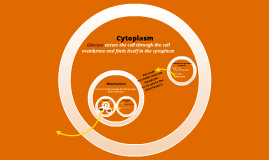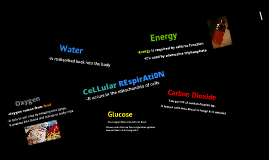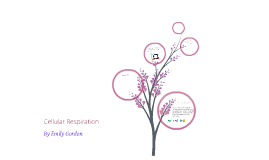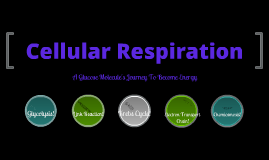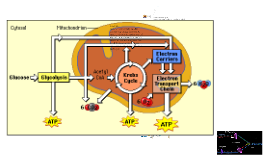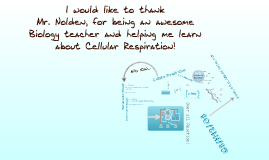Cellular Respiration
Transcript: Step 1 Glycolysis... C6/H12/O6 +2ATP 3(2C) + Pyruvic Acid + 4 ATP + 2 NADH #OF ATP USED: 2 #OF ATP PRODUCED: 4 #OF NADH PRODUCED: 2 The Transition Step!!! 2, 3Carbon Pyruvic Acids = 2, 2Carbon Acetyl COA's, 2 NADH, 2 CO Step 2 The Krebs Cycle! A Chain of Reactions! 2 ATP and 6 NADH and 4 Carbon Dixoides and 2 FADH 2(2C) 2ATP, 6NADH, 2FADH, 4CO # OF ATP PRODUCED: 2 # OF NADH PRODUCED: 6 #OF FADH PRODUCED: 2 Now, to recap... 1 ATP = 1ATP 1 NADH =3 ATP 1 FADH = 2ATP ATP = ENERGY!!! Step 3 Electron Transport System NADH and FADH + O2 = water and ATP or, usable energy!!! Changing NADH and FADH in ATP! NADH FADH NADH FADH ATP ATP ATP ATP Over all Reaction! C6/H12/O6 6 CO2, 6 H O, AND 38 TOTAL ATP Cellular Respiration Starts with Glycosis... C6/H12/O6 = Lactic Acid, 2 Carbon dioxide, Pyruvic Acid, Ethyl Alcohol + 2 ATP 2 NADH You Get... C6/H12/O6 = Lactic Acid, 2 ATP Starts with Glycosis... C6/H12/O6 = Lactic Acid, 2 Carbon dioxide, Pyruvic Acid, Ethyl Alcohol You get... C6/H12/O6 = Ethyl Alcohol, CO2 and 2 ATP Fermentation in Muscles Fermentation YEAST I would like to thank Mr. Nolden, for being an awesome Biology teacher and helping me learn about Cellular Respiration! +O ATP 2 6 NADH + 2 FADH 2 Acetyl CoA 2 NADH Electron Transport System Krebs Cycle Glucose (sugar) 2 NADH ATP AND NOW.... ATP # of NADH used: all # of ATP procuded: 38 Glycolysis happens in the cytoplasm 2 Carbon Dioxide 2






